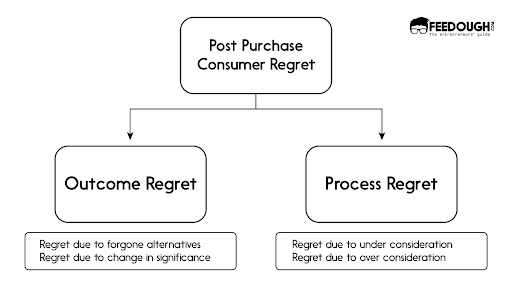Ben Franklin Sales Technique For Advanced Sellers: Getting It Right
Is uncertainty your biggest challenge?
It’s no secret that for many sales reps, uncertain times lead to hesitation. As a sales leader, hesitation is the last thing you want when trying to create harmony in your team, all while maximizing efficiency.
With remote sales changing the way you and your team sell your services or products, how do you redefine your processes in line with your customers?
Well, it starts by re-learning your sales skills and adapting them for the modern-day consumer. You need to be open to change and willing to face uncertainty with the right mindset.
However, as Benjamin Franklin once said,
“Well done is better than well said.”
So while it’s one thing to learn techniques, tools, and behaviors, it’s another to put them into practice.
The way we train at Krauthammer is all about real-play to pinpoint your current behavior as a salesperson, and then making sure it’s effective and efficient for today.
It’s about adopting the right tools for the right mindset. Because being an excellent salesperson and leader to your team is a practice in thinking. And it’s about time to get ahead of that game.
That being said, our content has already looked at traditional sales closing techniques. How do they work? How can you adapt them in a human-centric way?
To follow that thread, we’re going to look at the Ben Franklin sales technique. What is it? How are you currently putting it into practice? Is there a way to continue using it today?
In other words, does the Ben Franklin sales technique still work?
What is the Ben Franklin sales technique?
Often known as the balance sheet close, the Ben Franklin sales technique is when you give the prospect arguments for and arguments against buying your product, service, or solution.
This means you are telling potential customers about the positive and negative aspects of what you’re selling, without bias, manipulation, or a seemingly secret agenda.
On the surface, this seems customer-centric and honest, right? But you wouldn’t be wrong in thinking: Why would I willingly show my customers negative aspects of what I’m selling?
To put it simply, can this sales technique still work for modern-day consumers?
Is the Ben Franklin sales technique still effective?
Ever written a pros and cons list?
If you’ve ever watched Friends, you know that writing a pros and cons list about someone you’re dating may get you in trouble.
It’s a good thing that selling isn’t at all like dating...right?
Pros and cons lists are part of the Ben Franklin sales technique. Except as a sales rep, you’re the one listing the pros and cons to empower your customer to make that final purchase decision.
This is very important. Giving autonomy and unbiased information to your customers to help them make decisions is one way the Ben Franklin technique continues to thrive.
But in the 21st century, consumers:
- Are sales-savvy, often resisting selling techniques
- Carry out their own research
- Rely more on peer information (90% of customers read reviews before making a purchase)
While it may seem that this state of consumption doesn’t leave you much room to flex your Ben Franklin technique, consider this: While modern-day consumers are making up their own minds, there is still an entire selling process where they require your help and expertise to complete with ease and efficiency.
That’s because even the most decisive and information-driven customer will still experience choice overload, decision stress, and buyer’s remorse if the product they buy doesn’t fit their original buying goal.
The Ben Franklin sales technique will work to alleviate some of these psychological challenges.
Ben Franklin and decision-making: Let’s talk psychology

Imagine you’re selling a new type of craft beer. You are the link between the microbrewery and the consumer. So how do you apply the Ben Franklin sales technique to make your beer stand out?
First, you have to understand how your ideal customer makes beer choices in the first place.
Big beer brands know the importance of the bottle shape. Subconsciously, consumers expect beers to come in a certain shape, which is why you don’t get many variations.

For example, Warsteiner knew the importance of consistency, so they created same-shaped bottles and leveraged their German origin in their marketing.
In fact, brands conduct studies on how color, labels, and packaging affect the purchase decision of a beer bottle.
“It has been argued that under the appropriate conditions, both sensory congruency and sensory incongruity between what is expected and what is experienced while tasting can bring positive or negative reactions to the overall tasting experience.” - Frontiers in psychology
And we haven’t even gotten to how the beer tastes yet!
This is important for the Ben Franklin sales technique to work. You can only close sales by understanding the underlying forces at work in consumer decision-making.
And then capitalizing on those moments of hesitation with your pros and cons list.
After all, your goal isn’t to manipulate the customer but to give them the right information at the right time to help them along their purchasing journey.
“Back in the day, salespeople considered themselves the best in the world, with an eat or die mentality. Today, the idea that selling is just about money and status has shifted. Salespeople now enter into a partnership with the customer. It’s not anymore about pushing something in the market, but how you can help the prospect overcome their challenges together.” - Szymon Rompczyk, Krauthammer consultant
To sum it up – yes, the Ben Franklin technique is still effective. Consumers are savvy, but they require help in those final moments of purchase, now more than ever.
Why? Because the market is more saturated with choice than ever before. Brands and organizations are competing on a massive scale. It’s up to you to leverage your expertise and guidance, to show customers you are weighing your service, product, or solution information based on their needs.
Great, so now you know it’s effective. But how does it work?
The Ben Franklin sales technique in action
Consider this scenario: Your prospect is unsure whether to drink your craft beer or a Heineken.
Applying the Ben Franklin sales technique will look something like this:
A. “Our beer is new, interesting, and you’ll be empowering our small business. But if you go with Heineken, you’ll get exactly what you’re looking for. Heineken is the safe bet, with straightforward flavors and pricing. However, our beer includes fruity tastes like lychee and mango, while still preserving that natural hops taste. Which one would you like to try?”
It’s a pros and cons list of your product versus another. You point out what’s special about your product, in order to influence the decision-making process when the person is unsure of whether to buy product A or B.
This is one way the Ben Franklin technique in action is effective because the customer gets:
- All the information they need to make a decision
- Not too many pros or cons (which could lead to decision stress)
- The USPs (unique selling point) of your product
But for the Ben Franklin technique to really succeed, you need to tailor the information to your customer’s context.
Let’s take the same example in another context: Your customer is sitting on a beach. They are on holiday and are buying beers for five.
Now applying the Ben Franklin sales technique will look something like this:
B. “Our beer is new, refreshing, and you’ll be empowering our local craft brewery! It’s not too far and we can even take you on a tour of our brewery. The beer itself includes local fruity flavors like lychee and mango – perfect for a tropical holiday! But it’s not the safest bet, because you won’t have tried it before. It’s also a bit pricier than your average Heineken. However, if you’re buying for five, we can give you a discount.”In this way, you’re giving arguments for and against, but personalized to your customer’s context. On a beach holiday, most people make decisions in relation to novelty, refreshments, and the ‘treat yourself’ argument (most often than not paying higher price points to achieve this).
Once you have your customer’s context under your belt, you can begin to see how to drive their decision-making in the best way.

Psychologically speaking, the right way to leverage the Ben Franklin sales technique is to:
- Decrease choice overload by pointing out tailored facts made for them
E.g., fruity flavors are perfect for a tropical holiday.
- Facilitate the purchase decision by removing hesitancy, not creating it
E.g., it’s a bit pricier, but you can offer a discount.
- Reduce buyer’s remorse when they eventually do choose to buy
E.g., you can create some loyalty and reciprocity by taking them on a tour of the microbrewery if they buy.
In short, getting the Ben Franklin sales technique to work for you is all about framing, the customer’s needs and goals, and your own selling mindset.
Getting the Ben Franklin sales technique to work for you
1. It’s all about framing
As we’ve seen above, for Ben Franklin to work you need to frame your close in the right way. And that’s about being flexible in how you offer what you’re selling.
Your customers expect you to identify their personal references, which means you need to:
- Connect
- Listen
- React
On top of it all, you need to handle objections with care, stay positive throughout, and sell valuable solutions to your customers.
Krauthammer’s Solution Selling program can help you do this in four steps: Connect, Construct, Close, and Conquer.
2. Consider the customer
This one’s a no-brainer, correct? But to really be customer-centric, you need to become the trusted advisor rather than a sleazy salesperson.
Your pros and cons list should be something that happens at the close and considers the entire sales process. Meaning, you’re giving pros and cons that have been curated after intensely collaborating with the customer on a one-to-one basis.
After all, 60% of prospects want to connect with sales during the consideration phase (e.g., when they are researching options, coming up with pros and cons, or analyzing competitors).
This may not work for a quick sale like in our craft beer example, but it can definitely work post-purchase. For example, nurturing the customer post-purchase with:
- Marketing campaigns for new products
- Brand updates
- Discounts and offers
Considering your customer means selling on value. Luckily, you can train this kind of mindset through Krauthammer’s advanced value selling program, and convert one-off customers into long-term assets.
3. Train your mindset
Today, your customers are suffering from indecision. It doesn’t help if you and your team are also suffering from similar uncertainty and hesitation.
But this is a challenge to your mindset. Instead, being confident sellers will be mirrored in the confidence your customers apply to their purchase decision.
But confidence, optimism, and positivity are all areas you need to train to get right. Especially when it comes to how you close sales.
Start your training today
Things like the Alternative Close or Ben Franklin still remain tried and tested techniques that will enable selling in the future. But it’s up to you to adapt them to a modern context.
Krauthammer’s programmes make you a sales leader through sustainable behavioral change. Our mantra is to learn by doing.
According to Harvard Business Review, a coached salesperson will display superior performance (about 6.2% outperforming others).
Confirming that it’s only through training that you can make a behavior conscious. Echoing our good friend Ben once again:
Well done is better than well said.

.png?width=600&name=The%20Ultimate%20Guide%20to%20Adapting%20Your%20Sales%20Process%20to%20Incorporate%20Remote%20Sales%20and%20Energise%20Your%20Team%20to%20Boost%20Results%20(1).png)